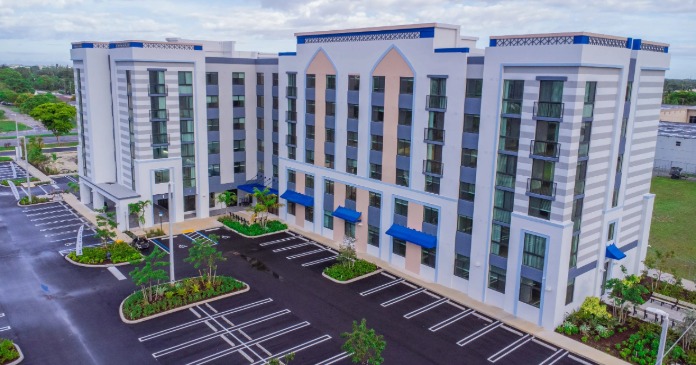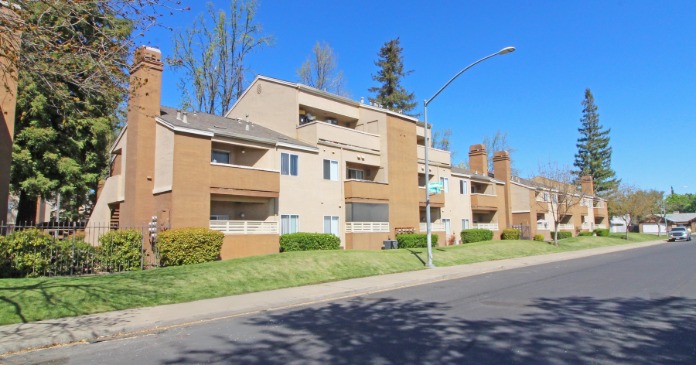Yield PRO TV presents NAHB Power Hitters. Host Linda Hoffman talks with Alan Scott, founder of NRP Group.
Transcript: NAHB Power Hitters interview. Linda Hoffman with Alan Scott recorded Thursday, March 2, 2023
(music)
Linda Hoffman: C.S. Lewis said that the most dangerous ideas in a society are not the ones being argued, but the ones that are assumed. I thought of this as I was deep diving on the meaning of the word—wisdom—in preparation for today’s show. Seems there are a few “assumed” ideas on what it is to be wise. In the interest of time let’s cut to the chase. The evidence of wisdom—or in business it’s called proof of concept—is a track record of successful results. One with a history of successful results, a book of success, one known for leaving the path better than it was found—that’s realized wisdom—that person is to be considered wise. Plain and simple. Positive results equal wisdom realized.
Results are where it’s at in the multifamily business, actually any business, and wisdom yields successful results. I know this seems like a simple, even trite concept, but today I take nothing for granted, including truth and reason. Let’s just say the last few years have been a little crazy which reminds me of another C.S. Lewis quote: When the whole world is running off a cliff, he who is running in the opposite direction appears to have lost his mind. I would only add that consensus is not wisdom. But I digress.
Let’s recap. The definition of wisdom is a book of success. And because a successful track record takes time to develop, wisdom is a trait of the seasoned. Those who have been around the block, those who know the ropes. So many idioms, so little time.
In our upcoming book, Lions of Multifamily, we call them… come on, this is not hard. Lions. Those with wisdom. The theme of the book, and in life actually, is to look to the lions, those with acquired wisdom to short cut rookie mistakes. Such mistakes are costly and in today’s high risk, thin margin environment, this can mean deal or no deal. The demand for housing is high but so are the inherent risks in the development, building and operation of these assets. When there is no- to low-margin for error, wisdom is of even higher market value.
Today I am delighted to welcome a true lion of multifamily. Alan Scott of NRP GROUP certainly has a notable book of success and he has shown no signs of stopping. Alan, it’s a pleasure to have you on the show.
Alan Scott: Thank you, Linda. And I might tell you I’m retired from NRP, but NRP is still part of my heart and soul every day.
Linda Hoffman: What is the Alan Scott story? I’d particularly like to know about how the advice to “buy it by the acre and sell it by the foot” influenced your career.
Alan Scott: Well, first of all, let me give you a little bit of background on me. I grew up on a chicken farm in Dexter, Michigan. And we had seven people in a 400 sq. ft. home. We were very poor. We ended up with a 600 sq. ft. home when my father added on and I suppose I was more of a menace than I was a help but I sure loved swinging that hammer. And I knew from the time that I was 5 years old, helping my dad that I knew that I wanted to be a builder.
And I ended up going to Michigan State University in the construction management program. In 1972, I went to the first homebuilder’s convention that I attended and I wanted to meet the Builder of the Year who was Ray Ellison. Because I always had aspirations of going into my own business and I walked up to Mr. Ellison—he was a big guy when a 10-gallon Texas hat on. And I said Mr. Ellison, I’m just starting out and I really—can you impart anything to me that would help me be successful like you are? And he looked at me, put his arm around my shoulder, and said, “Son, you buy it by the acre, you sell it by the foot.” And he walked away and I never met the man again.
And then I kept thinking about that. And said, you know, first I’ve got to be able to negotiate. I’ve got to be a good negotiator and I’ve got to be able to be a landowner. I’ve got to be able to get out there and touch the land and feel it and that’s when shortly after that I was hired by Wallack—Jack Walleck who was my mentor and he was an icon in this industry. Just a tremendous individual. I worked for him for 13 years as his vice president of development where I put together hundreds of Section 8 projects and all kinds of federal affordable housing type of deals.
And then in 1986 I had an opportunity to start a business with the Zaremba brothers in Cleveland, Ohio, and that’s when I moved to Cleveland and we started a business called Zaremba Development Corp where I was president, CEO and partner. And we built apartment complexes throughout Pennsylvania, Ohio and Florida.
In 1980—the mid 80s—I helped start the special committee on senior housing at NAHB by writing a letter to Harry Pryde telling him that I felt that the future of this industry was going to include a lot of senior housing because I could see the bubble, you know, coming over the years. It was a little early, but I think, I thought we needed to have a committee to be able to study it so that we’re ready when the wave comes.
And so myself, Bill Wright in Denver and Monty Powell we started that special committee on senior housing—it is now the Senior 55-Plus committee at NAHB. And, so I was giving a speech in the late 80s, I think it was like 1988 or 89 and I said—one of the things that I told the audience was there’s going to be a desperate need for affordable housing for our senior citizens in the future. And out of the clear blue sky a guy walked up to me I said, I think I have your answer. He said I’m building single-family tax credit homes in New York and I’m syndicating them individually to different investors and it’s been a very successful program for me the last year or so.
So, I was on the next flight to New York, met with him. He showed me everything he was doing. He gave me copies of his plans. Just everything. I brought out boxes of stuff from him and then at Zaremba we started looking into the Low-Income Housing Tax Credit program. And we were still doing a lot of market rate multifamily, and I ended up running their retail division for them as well because the gentleman who ran it was killed in an auto accident. And so, I immediately assumed that and we built about 10,000,000 sq. ft. of retail.
And then in 1993 I bought my company away from Zaremba and we applied for tax credits all for a 70-lot subdivision. We applied for 35 homes through the Ohio Housing Finance Agency, and we were awarded those 35, but they called me up and said we don’t know what do these tax credits. This is a new program and we have so many that we don’t know what to do with them. Can you take 35 more? I said, sure, I’ve got 70 lots. I’ll build upon every one of them. And we did. My new company, we built the houses, we sold them. We tapped into an emergency physician network and sold every one of them to doctors and individually they got $7,700 a year of tax credits and paid $100,000 a house. And they got $7,700 a year for ten years.
So that was the beginning of our affordable housing and so now 1994 rolls around and that’s when Ohio Savings Bank, which is my primary lender, they said, the president of Ohio Savings, Bobby Goldberg said, I would like you to mentor my son and my Chairman of the Board’s son and teach him development because I really like what you’re doing. And so, I agreed to do that, and I said, under one condition, they would get no favoritism because you guys are who you are. And the other guy—his father’s name was Bill Heller and his son’s name was David Heller.
And so, David worked with me for year, and I knew he was a brilliant and credible person. But I knew that he would be a tremendous partner. And so that’s when David and I joined together and started the NRP Group. But that’s really how it started. A long answer to your question.
Linda Hoffman: No, that it a remarkable story, Alan. You were co-founder of NRP, a company focused on affordable. So, let me ask you, what drew you to this segment of the housing market? And you gave us a little insight…
Alan Scott: Well one of the things that drew me to it is I was poor when I grew up. You know, you had to work for every single little thing you had. And I visited the junkyard many times putting parts together so I could build my own bicycle. And I wanted to make—housing for people was a passion of mine. I wanted people live in decent housing and I wanted to—and I thought that affordable housing, you know, was the way to go.
I really had a tremendous opportunity, also, in 94, which really drew me into the—really deeply into the affordable housing and that was when I was on the housing commission for Mayor Mike White in the city of Cleveland. And we hadn’t built—we built 50 houses in Cleveland in 10 years total. And he said I want to build 2,000 homes a year in the city of Cleveland. And I’m going, wow, that’s a tall order considering the fact you’ve averaged five homes a year for the last ten years.
And so, I came up with this program that I invented and it was called Lease-Purchase-Single-Family Homes under the tax credit program. And we would build these houses—we would lease purchase them to the tenants, which were all in the inner-city, you know, low-income neighborhoods. And they would lease them for 15 years and then at the end of 15 years they’d have the opportunity to buy them. It might cost us $100,000 to build them, but they could buy them for like $20,000—because of the tax credits we could write down the cost tremendously, and because of tax credits, grants, whatever we might have a $20,000 loan on a $100,000 house.
So, that program was designed for future ownership and if—we built probably 6 or 7,000 homes under that program, which really got us big time into the affordable housing business with the Low-Income Housing Tax Credit program.
Linda Hoffman: Was NRP’s move into other asset types a reaction to fewer opportunities in affordable or were you seeking faster growth?
Alan Scott: Well, it was a combination. The Low-Income Housing Tax Credit program got very competitive. Lots of builders are doing it and, quite frankly, I was showing a lot of my builder how to do it because I felt that this was the answer to affordable housing in America.
And so, I was putting myself into more competition where we were, but it was good competition. And we thought if we’re going to grow, we need to grow or diversify. And every year we developed a strategic plan. David and I, and then in 95 we added a third partner who bought my brother out who was my initial partner and his name was Rick Bailey and he was a real construction—I mean he was a really great construction guy.
And so now we have David who was a big finance guy and I’m the developer putting the deals together and Rick is the builder, building them. So now we have the three legged stool, you know, all put together so we figure—well it’s time to diversify—we don’t want to get out of the affordable housing business—we’re since we’re still committed to it 100 percent, but we also want to add some more buckets.
We looked at everything, you know, in terms of our strategic plan as filling buckets. The develop—the Low-Income Housing Tax Credit program—that filled the bucket of developer fees, GC fees, some management fees and a little bit of cash flow. Because there’s not a lot of cashflow in that program. But the market-rate program filled a general contractor fee, a much larger cash flow and the opportunity to dispose of the property if the price—you know, we were, if we had a really good price and the cap rates were low. As it turned out that was a golden goose for the last 10 years. But, and so that’s really why we diversified. And it worked out beautifully.
Linda Hoffman: You know, Dean warned me this was going to be a great show. I really appreciate you coming on.
Alan Scott: You’re welcome.
Linda Hoffman: Once not that long ago the next gen sought out the wisdom, knowledge and experience of those familiar with the terrain. The war stories of the industry and always, but always, the lessons learned. Without this history and knowledge and experience, the next in line are doomed to repeat the hard-earned lessons of times past and that would be the greatest loss of.
The Lions of Multifamily, the Allen Scotts and so many more have much to teach. Those ears that will hear will only benefit as will a country desperately in need of housing.
Thank you for being with us today. Builders, developers, operators. The creators of this great nation. Housing remains its backbone and will continue to shape its success and greatness. We appreciate the lions of multifamily.
I’m Linda Hoffman. Look for our next exciting episode of NAHB Power Hitters.
(music, close, credits)
NAHB POWER HITTERS (logo)
In association with National Association of Home Builders (logo)
Building Homes, Enriching Communities, Changing Lives
Yield Pro TV (logo)
An Image Production
Host Linda Hoffman
Executive Producer Andrew Nicks
Research Michael Rudy
Guest selection and coordination Dean Schwancke
Production Image
Yield Pro TV is a production of Multihousing Professional magazine corporation and may not be reproduced or copied in whole or in part without the expressed permission of the publisher.
©2023 Yield Pro, LLC.











